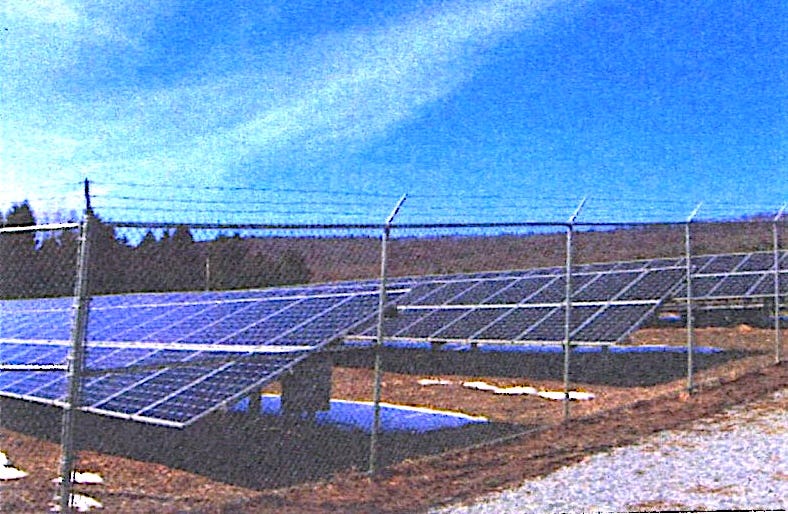Dauphin County Wants Out of A Money-Wasting Dead-End Solar Farm and This Isn't the First Time!
Dauphin County, Pennsylvania is stuck with a green elephant. The project was hailed as the future back in 2011 when it began, as this Central Penn Business Journal article shows us:
The $5.4 million project, installed by Harleysville-based InfraSource Services Inc., consists of 4,340 solar panels that will produce about 1.4 million kilowatts of electricity per year.
The farm is on five acres at Hetrick Lane and Fishing Creek Valley Road. It is expected to offset up to 20 percent of the annual power needs at county-owned facilities, officials said.
Individuals and businesses earn Solar Renewable Energy Credits by generating power: 1,000 kilowatt-hours earns one credit.
The county has entered into an agreement with PPL Electric Utilities to buy the credits. Utilities buy the credits to help meet green-energy mandates set by the state.
Dauphin County received $1.6 million in grant money from the Commonwealth Financing Agency to help finance the solar project. The balance was financed with county development funds.
Now, 13 years the future has arrived and, despite the big grant subsidy and the Renewable Energy Credits (more subsidies) the County wants out:
When a Dauphin County agency announced plans to sell its failed solar farm, it sparked questions about the project’s history and financial viability. The solar farm, located in 120 Hetrick Lane in Dauphin County, has been a topic of discussion due to its lack of profitability and ties to long-time county officials.
In 2011, county leaders unveiled the solar farm as a groundbreaking initiative to reduce energy costs and promote green energy in West Hanover and Middle Paxton Townships. Despite an initial investment of nearly $8.8 million, audits have revealed that the solar farm has been operating at a loss in recent years, raising concerns about its sustainability and return on investment…
While the solar farm was initially touted as a green energy initiative, its underperformance has raised questions about its environmental impact and contribution to sustainability goals.
The Request for Proposals (RFP), in fact, is already out there and asks for responses by 4:00 PM on October 21, 2024. If there is a successful proposer, the sale will be an “As Is, Where Is and With All Faults” one, according to the RFP. But, it’s a big ‘if’ whether there will be an actual sale. It was tried before. The minutes of the Dauphin County Industrial Authority, the actual owner of the facility are replete with attempts to unload the project as far back as September 21, 2017:
Mr. Connor stated that he met with Signet Capital, LLC, an Ohio-based company and would like to have them present to the Board next month to potentially come to an agreement concerning the selling of the Solar Farm.
This was because the economic futility of the project had already become very apparent more than three months earlier, as June 29, 2017 minutes indicate:
Doug Berry and Bill Napikoski provided the Board with a hand-out of information pertaining to Solar Renewable Energy Credits (SRECs). Discussion was had regarding the revenue generated from the solar farm. The value of SRECs has decreased drastically. Discussion was then had regarding the refinancing of the solar farm. An RFP was prepared and 5 proposals were received. Ultimately, Fulton Bank’s proposal was chosen. Mr. Stewart discussed the preceding in Commonwealth Court with PPL and PUC. The IDA is still not receiving the rate that was granted by the Commonwealth Court. Eventually, the IDA will receive the money owed back but as to when that will happen is undetermined. The Board discussed possible options to create revenue from the solar farm. Mr. Mehok and Mr. Wenger will be presenting the Dauphin County Commissioners with a proposal to become guarantor of the refinance with Fulton Bank.
There is much more to the sordid history of this project but the above shows the whole thing was built on an edifice of huge unaffordable subsidies that ultimately couldn’t be realized. The County is stuck with the green elephant despite multiple efforts to unload it over the last seven years. It’s green energy in a nutshell. The projects themselves are not the problem. I’ve worked on them and helped process them at the municipal level, in fact. But, they make zero economic sense; not just ‘net zero,’ but less than zero.
#Solar #DauphinCounty #RFP #PPL #PUC #RECs






At 69 cents per kWh or over 20 times it's market value, I can see why they want out.
Multiply 8.8 million by .11 to get annual cost. Divide by 1.4 million kWh per year to get cost per kWh.
Based on 8 % cost of capital and annual o&m equal to 1% of capital.
A business based on credits and grants is not a sustainable business. When promoted as harvesting the grants to build a facility and then to sell it based on credits (perhaps hypothetical) and not operate the plant - it becomes a grifters hoax on the taxpayers as the source of the free government money.